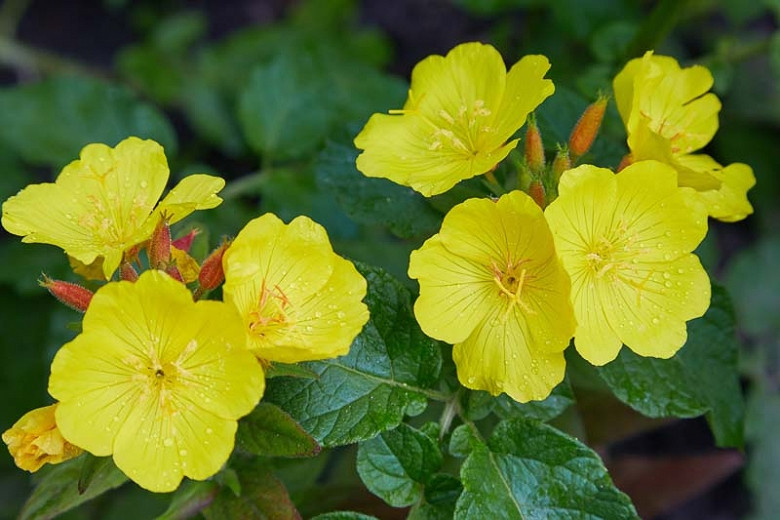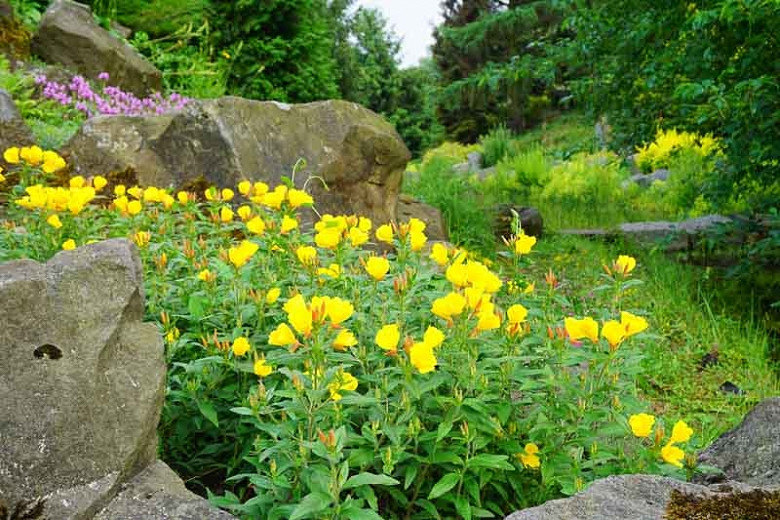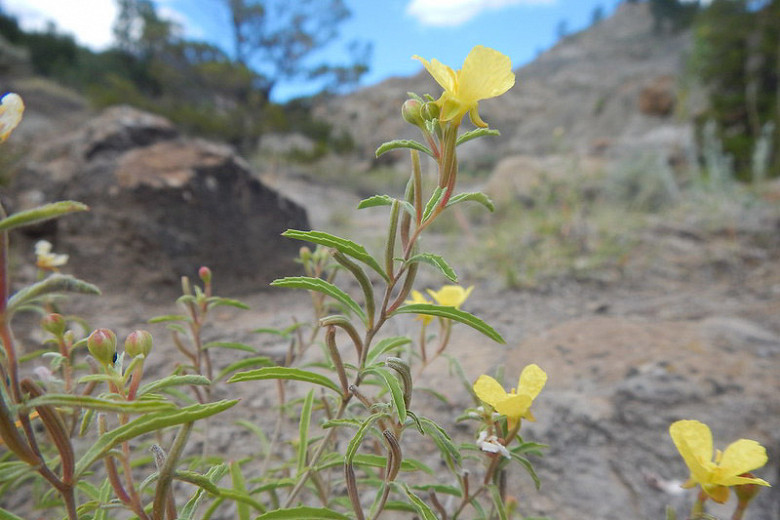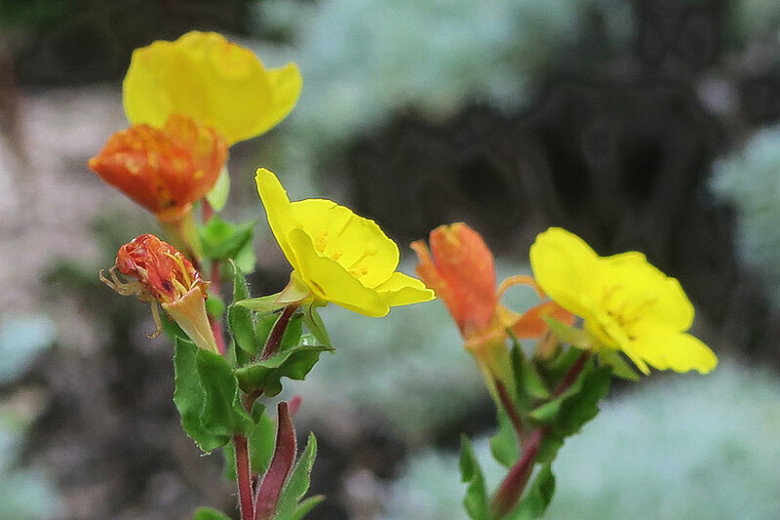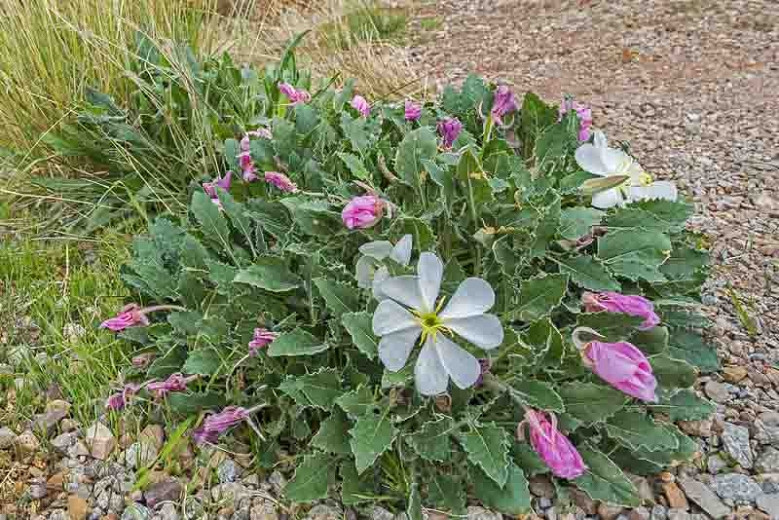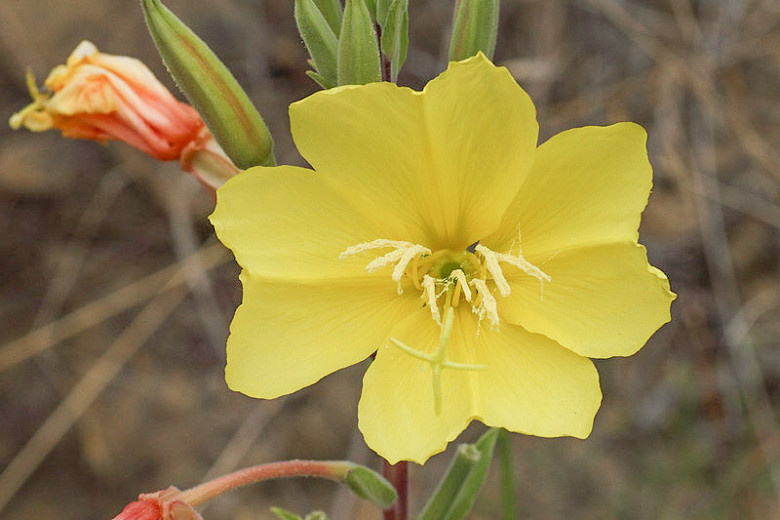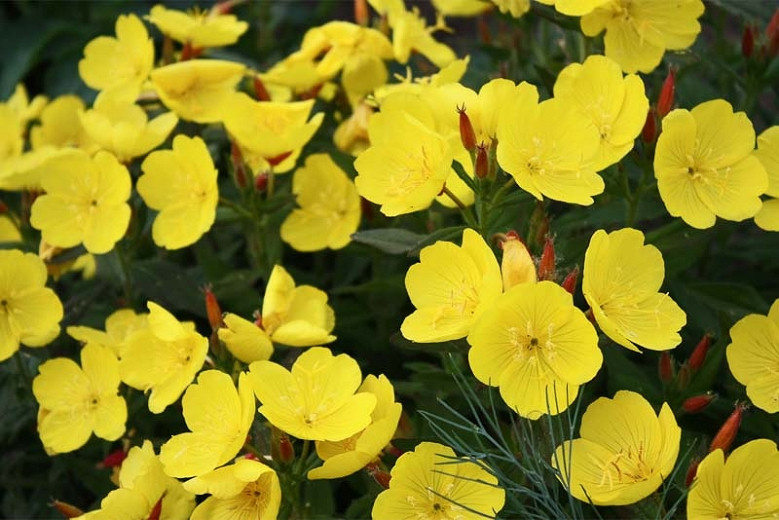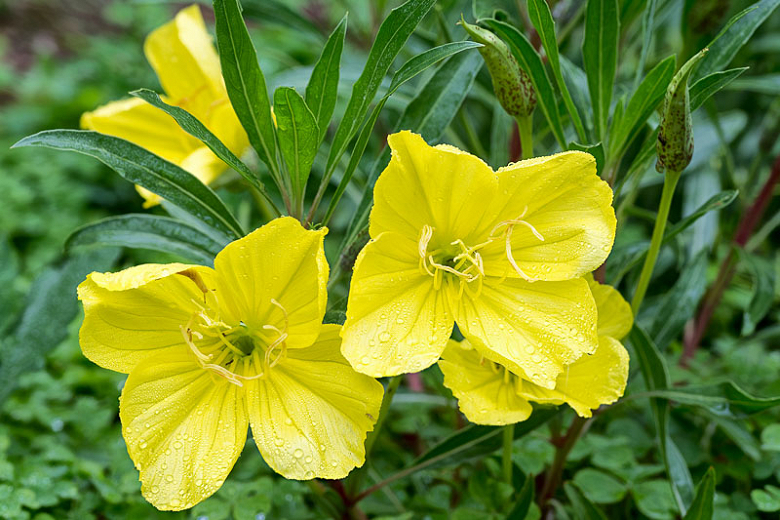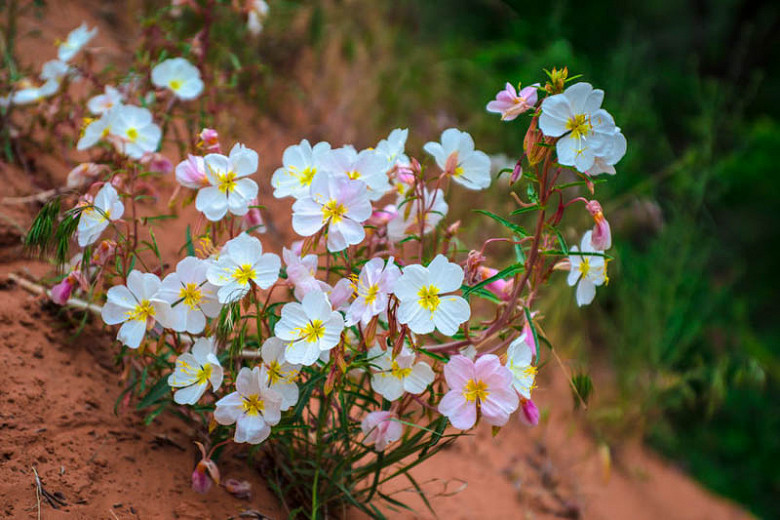Oenothera biennis (Common Evening Primrose)
Fragrant and showy, Oenothera biennis (Common Evening Primrose) is an erect biennial featuring large, bowl-shaped, lemon-scented, yellow flowers, up to 2 in. across (5 cm), at the top of a stiff, purple-tinged flower stem. Blooming profusely from early summer to early fall, the flowers open in the evening and remain open through late morning. They rise on leafy, branched stems from a basal rosette of oblong, long medium green leaves. This Evening Primrose completes its life cycle in 2 years, its basal leaves becoming established in the first year, while flowering occurs in the second year. The seeds stay, however, and germinate if the soil is disturbed. The whole plant is edible: the leaves can be cooked as green vegetables and the flowers make beautiful salad garnish!
Requirements
| Hardiness | 4 – 9 |
|---|---|
| Plant Type | Perennials |
| Plant Family | Oenothera – Primroses – Sundrops |
| Exposure | Full Sun, Partial Sun |
| Season of Interest | Summer (Early,Mid,Late)Fall |
| Height | 3' – 5' (90cm – 150cm) |
| Spread | 2' – 3' (60cm – 90cm) |
| Spacing | 30″ (75cm) |
| Water Needs | Low, Average |
| Maintenance | Low |
| Soil Type | Loam, Sand |
| Soil pH | Acid, Alkaline, Neutral |
| Soil Drainage | Well-Drained |
| Characteristics | Fragrant, Showy |
| Native Plants | United States, California, Midwest, Illinois, Indiana, Iowa, Kansas, Michigan, Minnesota, Missouri, Nebraska, North Dakota, Ohio, South Dakota, Wisconsin, Northeast, Connecticut, Delaware, Maine, Massachusetts, Maryland, New Hampshire, New Jersey, New York, Pennsylvania, Rhode Island, Vermont, Pacific Northwest, Oregon, Washington, Rocky Mountains, Montana, Southeast, Alabama, Arkansas, Florida, Georgia, Kentucky, Louisiana, Mississippi, North Carolina, South Carolina, Tennessee, Virginia, West Virginia, Southwest, Nevada, New Mexico, Oklahoma, Texas |
| Tolerance | Deer, Drought, Dry Soil, Rocky Soil |
| Attracts | Bees, Birds |
| Garden Uses | Beds and Borders |
| Garden Styles | Informal and Cottage, Prairie and Meadow |
